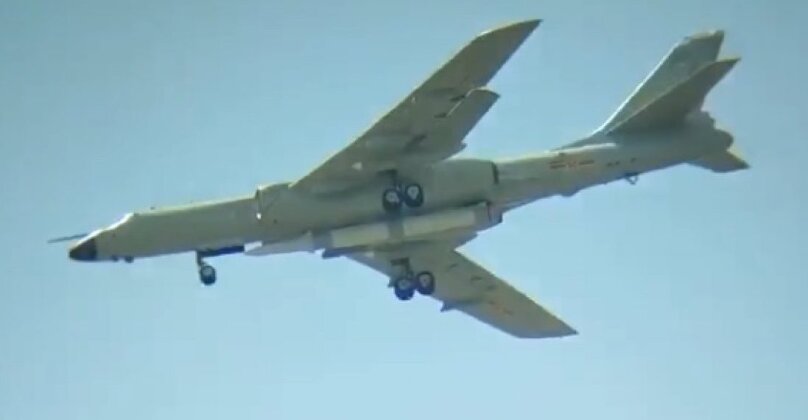China’s H-6K aircraft, a modification of the H-6 bomber equipped with ballistic missiles, has made an appearance at Zhuhai Jinwan Airport ahead of the the Zhuhai Airshow, where it is expected to be one of many key new combat assets on display. The aircraft carried a pair of ballistic missiles, thought to be of the CM-401 class, and came from the People’s Liberation Army Air Force Southern Theatre Command’s 8th Bomber Division. The H-6 is the only class of bomber to have been produced in significant numbers in the 21st century, and is fielded in much greater numbers than any other bomber class with over 270 in service. New variants of the aircraft have been built for a range of roles from electronic warfare platforms to aerial tankers and cruise missile carrying ship hunters, with the H-6K ballistic missile carrier’s induction increasing the diversity of the fleet further. It has been widely speculated that the aircraft was designed primarily as a ship hunter to launch ballistic missiles against large enemy surface targets such as destroyers and aircraft carriers, complementing China’s increasingly potent arsenal of ground launched anti ship ballistic missiles. The missiles were reported by official sources to also be capable of engaging ground targets.

Although an air launched ballistic missile for the H-6K, the CM-401, was unveiled in 2018 at the Zhuhai Airshow that year, much remains uncertain regarding its specifications. The missile is estimated to have an engagement range of over 2000km and Mach 8-10 speed, and according to some unverified reports has benefitted from technology transfers from Russia’s Kh-47M2 air launched ballistic missile program – which produced a missile ready for service in late 2017. Although air launched ballistic missiles were not deployed abroad before then, they are expected to be fielded more widely with the U.S. Air Force invested in the development of a similar missile for its B-52H bombers – the AGM-183A. A second much larger ballistic missile class for H-6 bombers, known only as the CH-AS-X-13, was also developed in China had is thought to have a significantly longer range and a greater orientation towards land attack roles. As the only country fielding multiple classes of air launched ballistic missile, this allows China’s H-6 bombers to contribute greatly to its regional strike capabilities.
The maximum payload the H-6K can carry remains uncertain, although the aircraft is thought to be able to carry up to four ballistic missiles despite the toll this weight would take on its endurance. The H-6 is relatively light for a bomber and restricted to operations in the Western Pacific region, making it well suited to serving as a launch platform for tactical ballistic missiles although limiting its viability for longer range interdiction of enemy shipping. A clean sheet Chinese bomber design, the intercontinental range H-20 stealth bomber, is expected to make its first flight before 2025 and could potentially deploy future derivatives of the CM-401 with a much greater reach.
